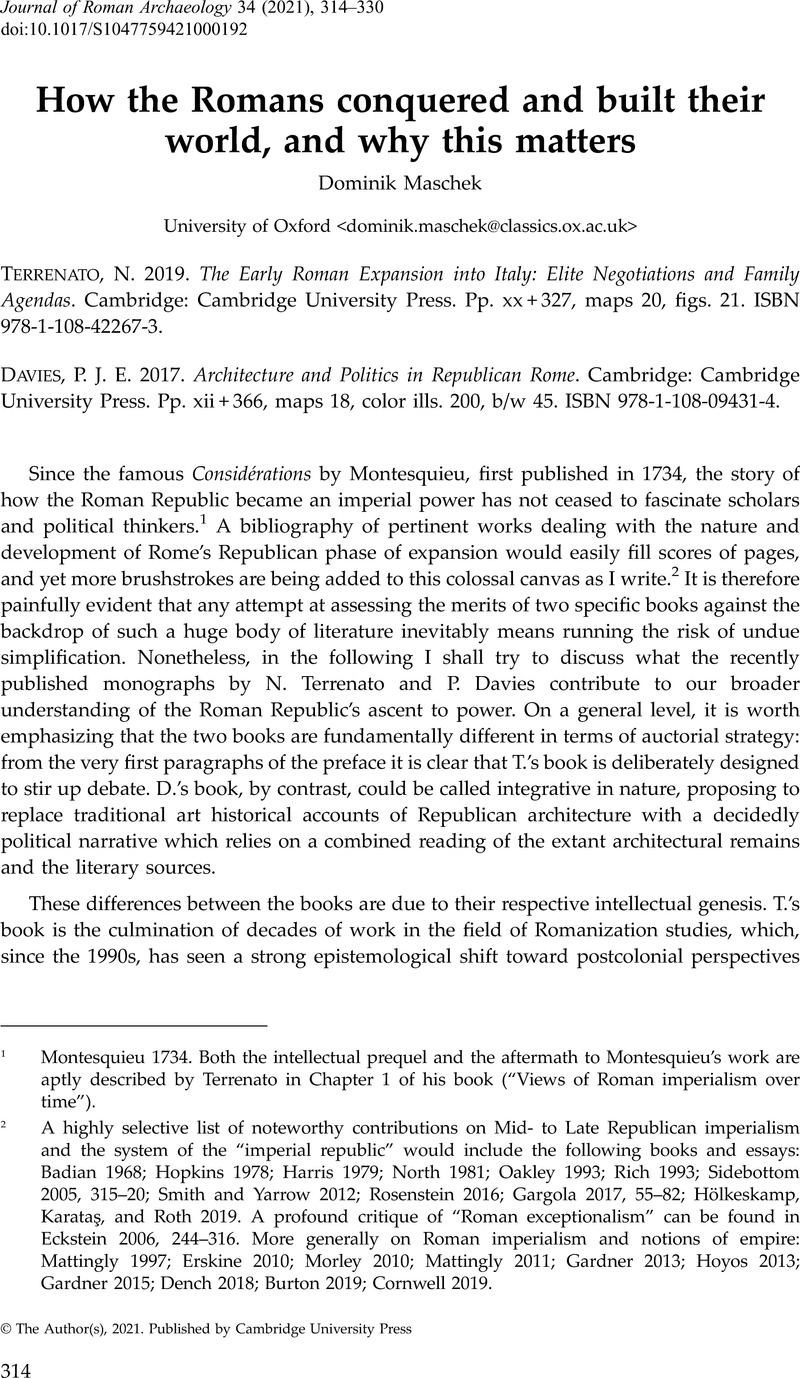Crossref Citations
This article has been cited by the following publications. This list is generated based on data provided by Crossref.
Fernández-Götz, Manuel
and
Roymans, Nico
2024.
Archaeology of the Roman Conquest.

Published online by Cambridge University Press: 16 April 2021
